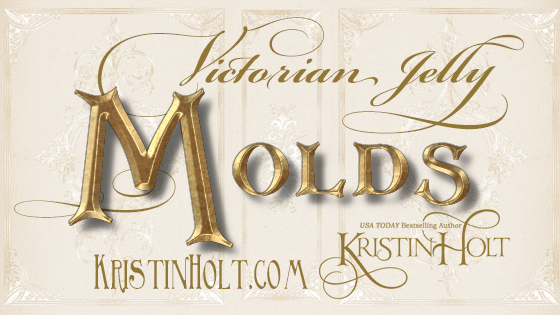
Victorian Jelly: Molds
Fancy jellies graced 19th century tables, molded in dishes made of tin, zinc, copper, and various ceramics. Photographs of antiques, together with vintage advertisements, illustrate this Victorian kitchen staple.

Fancy jellies graced 19th century tables, molded in dishes made of tin, zinc, copper, and various ceramics. Photographs of antiques, together with vintage advertisements, illustrate this Victorian kitchen staple.

Can you imagine baking cookies like a Victorian? Given many ingredients and measuring methods are unfamiliar to today’s cooks, I’ve shared brief info about those mystery ingredients and 19th-century measuring implements.

As each book in Grandma’s Wedding Quilts series has its own quilt pattern, I share some historic tidbits about the meaning behind the Flying Geese quilt blocks. Pleasance’s quilt, Flying Geese, to her 10-year-old mind wasn’t fancy enough, but by the time she marries and better understands the value of Grandma Mary’s gift to her, the significance of this quilt pattern (and her grandmother’s work) means a good deal to her. I share quotes from the book, beginning and end, with Pleasance’s attitudes about her very plain quilt pattern.

Old West Barber Shops used the traditional sign of the striped pole, advertised in newspapers, and usually hired men. Comparing for time passage and inflation, the low rates barbers charged then still seem ridiculously low. This is the first of many posts about Old West Barber Shops and Ladies Hair Salons.

The popularity of stereoscopes and image viewing began in the early 19th century and persisted into the 20th. Victorian Americans enjoyed viewing three-dimensional paintings, drawings, and photographs of people and far-away places as well as images that reminded them of home. Stereoscopes were one of many new inventions the well-to-do enjoyed for entertainment.